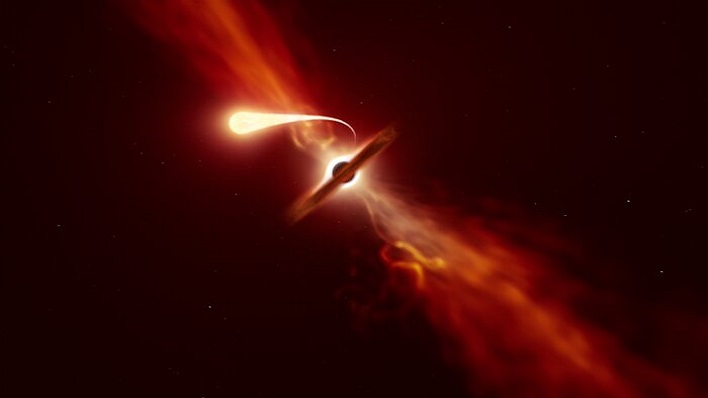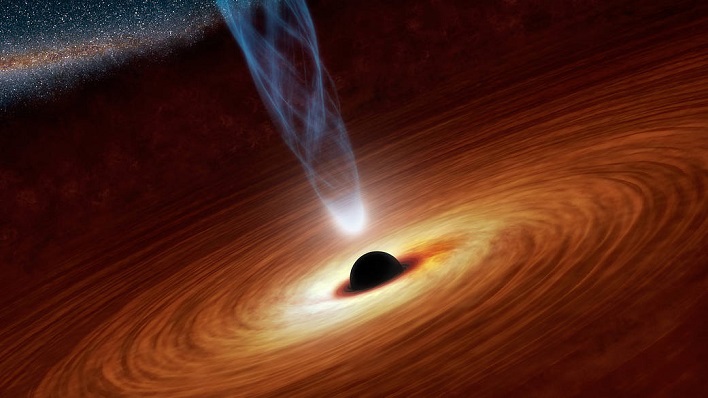Slack-Jawed Astronomers Witness Intensely Bright Moment A Black Hole Switches On

The phenomenal event was first detected by Dr. Samantha Oates, an astronomer at the University of Birmingham, and her team, in September 2019. The team was searching for the electromagnetic light from a gravitational wave event while using the Ultra-Violet and Optical Telescope on board the Neil Gehrels Swift Observatory. What they were hoping to find were signs of a kilonova. But what they ended up finding was even more rare in object J221951.
A kilonova typically emits a blue light, then dims and turns redder in color over time. The object in deep space they did detect, J221951, appeared blue, but did not change color or fade as fast as a kilonova would. Follow-up observations were made with multiple other telescopes such as NASA's Swift/UVOT and Hubble Space Telescope.

"Our understanding of the different things that supermassive black holes can do has greatly expanded in recent years, with discoveries of stars being torn apart and accreting black holes with hugely variable luminosities." He added, "J221951 is one example of the most extreme examples yet of a black hole taking us by surprise. Continued monitoring of J221951 to work out the total energy release might allow us to work out whether this is a tidal disruption of a star by a fast-spinning black hole, or a new kind of AGN switch on."
One of the more important discoveries made, according to Dr. N. Paul Kuin, a member of the team from the Mullard Space Laboratory at University College London, was when Hubble ruled out a Galactic origin due to the ultraviolet spectrum detected.
Dr. Oates concluded, "In the future we will be able to obtain important clues that help distinguish between the tidal disruption event and active galactic nuclei scenarios. For instance, if J221951 is associated with an AGN turning on we may expect it to stop fading and to increase again in brightness, while if J221951 is a tidal disruption event we would expect it to continue to fade." She adds that the team will need to continue to monitor J221951 over a period of months to years in order to "capture its late-time behaviour."
Top Image Credit: ESO/M. Kornmesser

